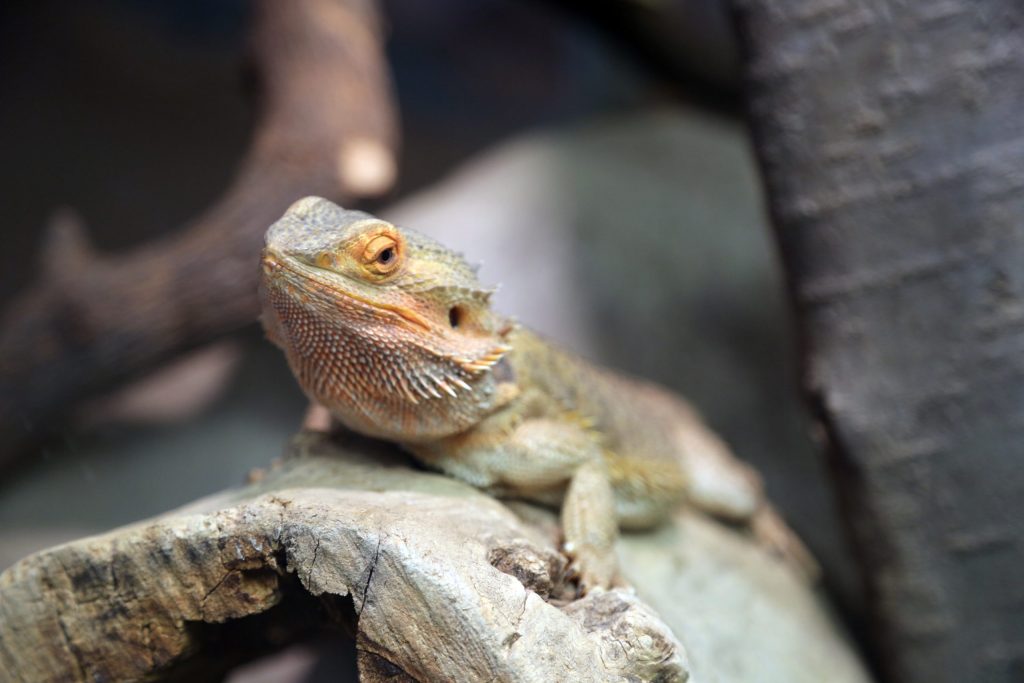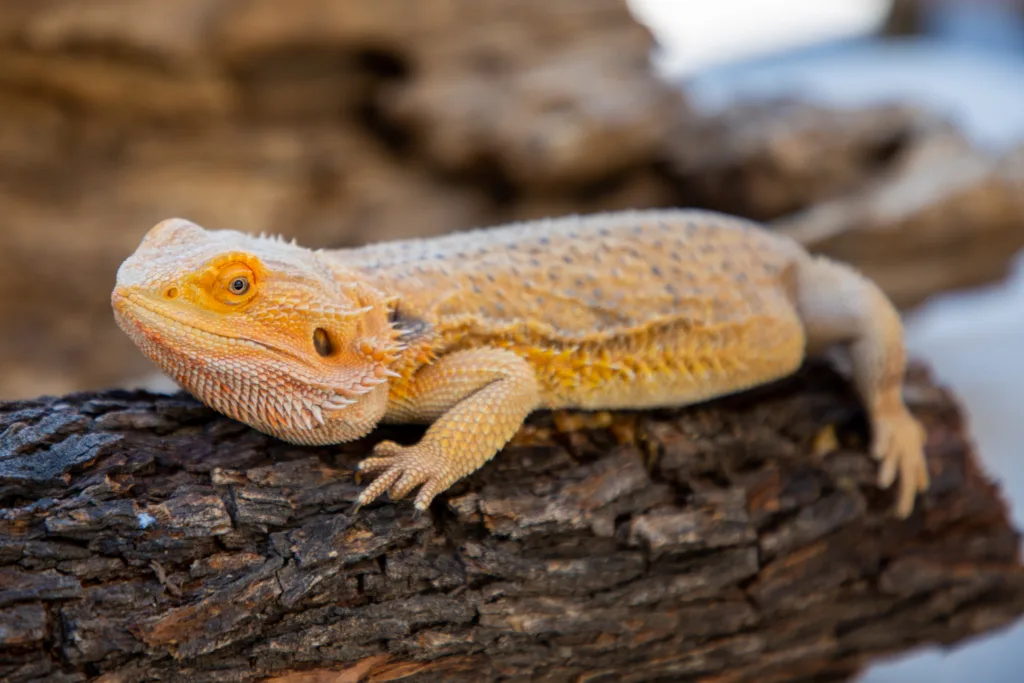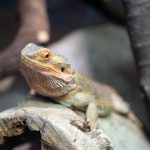Bearded Dragon




Bearded dragons got their name from their spiky “beards.” This is actually an expandable throat pouch, which is used for both mating and aggression displays. Bearded dragons have an excellent form of camouflage: their coloration depends on the color of the soil/sand of the region they live in. They can range from a dull brown color to a tan color with red and gold highlights. This allows the bearded dragon to successfully blend in with their surroundings, which is helpful for hunting as well as avoiding predators.
Diet:
Because they are found in areas where food can be hard to find, bearded dragons are opportunistic omnivores, meaning they will eat just about anything they encounter. Bearded dragons primarily feed on plant matter and insects, but have been known to eat the occasional small rodent or lizard.
In the Wild:
Bearded dragons display interesting behaviors in order to communicate with other individuals of the species. One of these behaviors is arm waving; the bearded dragon will stand on three legs and wave one of their forelimbs in a circular motion. Scientists believe that this is a form of species recognition and can also be used to show submission. Smaller bearded dragons and females will do this behavior when approached by larger, dominant males. Males have been known to head bob–moving their heads up and down quickly–with their dark beards showing to exhibit dominance and display for a potential mate.
Conservation issues/actions:
Introduced predators–like foxes and domestic cats–are the major threat to wild bearded dragons. By spaying or neutering your pets, you can help protect our local reptiles by limiting the number of predators. Bearded dragons are quickly becoming popular pets to own, but we recommend doing your research before deciding to have one for yourself. These animals require a special diet, a suitable sized tank, heat lamps, special substrate, and many more things to consider. It is also important to seek out a bearded dragon breeder that does not take these animals from the wild.
Species Name
Bearded dragon
Scientific Name
Pogona vitticeps
Continent
Australia
Adopt a Dragon
At the Zoo
Bearded dragons are omnivores, eating both plants and small animals. At the Zoo, they enjoy a meal of mixed greens and worms or crickets. Watch closely and you may see them hunting for a cricket!
The Zoo’s bearded dragons live in an exhibit inside the Conservation Learning Center.
Dragon News
Proud Parents
- Susan Rubin
- Stella Pence
- Stella Prasse
- Ramey Baggett
- Gwynn Elser
- In memory of Lali
- Sarah Pungitore

